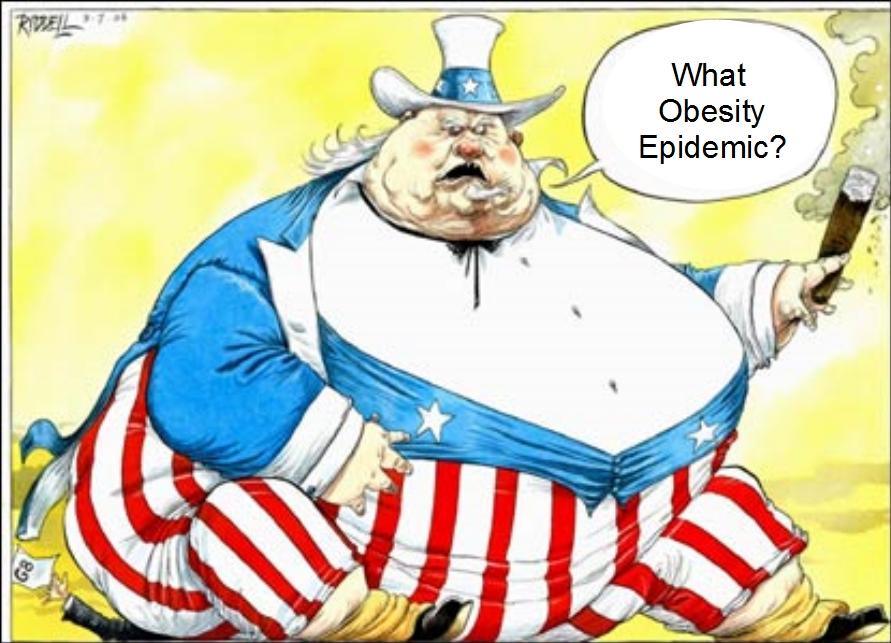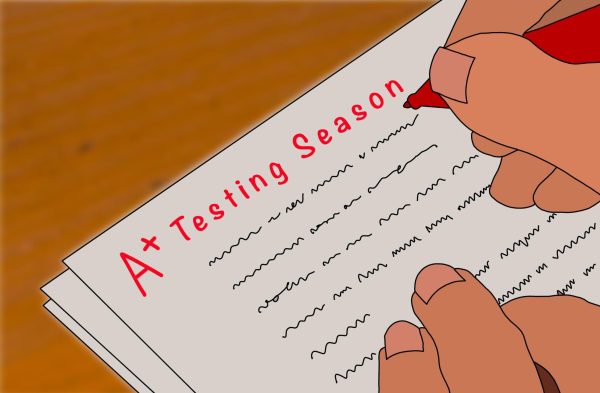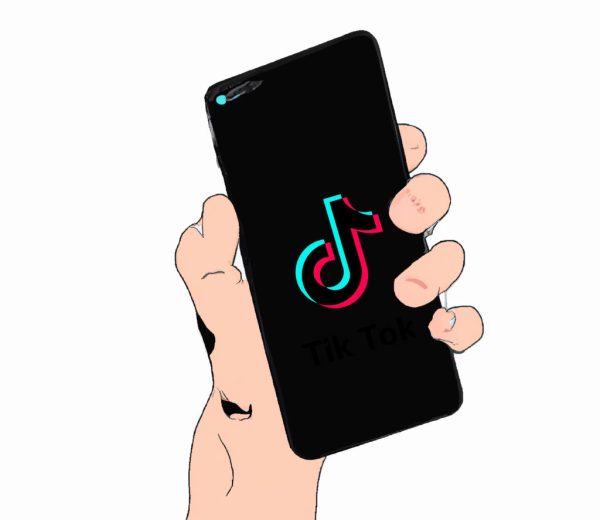Consumers May Not Be to Blame for the Obesity Epidemic
Cartoon illustrating the failure of the government to recognize a serious and obvious problem.
Oct 31, 2014
In the 1970’s, large food companies began to realize that sugar was becoming pretty expensive to use, due to the high tariffs on imports and the inefficiency of farming cane sugar naturally. Because the corn industry is heavily subsidized by the government, scientists found that High Fructose Corn Syrup (HFCS) is less expensive to produce, mixes into foods and drinks more easily and acts as a preservative. Originally, this wonder chemical was also thought to be healthier, since it doesn’t cause its unsuspecting victims’ blood sugars to spike. Unfortunately, this was not the case at all, and HFCS quickly became the most common sweetener in the United States.
Fructose is not the preferred sugar for humans and is incredibly simple on a chemical level, so it is digested only by the liver, which leads to increased fat production. Fructose does not catalyze the release of leptin, which controls appetite, so as a result, our bodies do not receive the cue to stop eating. HFCS also leads to Type II Diabetes, because of its resistance to insulin. From 1980 to 2008, the rate of obesity amongst children has increased from 6.5% to 19.5%. While the increase in sugars within our food is not the only result of this change, it can also be attributed to the technology craze and growth in the fast food industry; sugars certainly play a large role.
The World Health Organization recommends that no more than 5% of calories consumed should be from sugar, and the American Heart Association recommends no more than 6 teaspoons daily for women and no more than 9 teaspoons daily for men. Most americans consume about 23 teaspoons daily.
Here are some every day foods and drinks and their sugar content:
- Snickers candy bar: 7 teaspoons
- Coca Cola (12 oz): 7 teaspoons
- Froot Loops: 10.6 teaspoons
- Mountain Dew (20 0z): 15 teaspoons
- Powerade (20 oz): 7 teaspoons
Everyone should certainly take responsibility for what they consume. It is very possible to avoid extraneous sugar, especially while shopping at higher standard supermarkets such as Trader Joe’s and Whole Foods. It certainly takes a cognitive thought process to place a box of Lucky Charms in one’s shopping cart instead of a natural oatmeal, but it becomes very hard to eat healthy when so much of the cheaper food in the super market contains dangerous amounts of sweeteners.
The U.S. government subsidizing the corn industry allows for unhealthy foods to sell for much cheaper, and it is absolutely unacceptable for the U.S. government to fund the obesity epidemic that has become increasingly prevalent.
“The lack of education and awareness on nutrition is detrimental to our youth and it’s sad to see these big food companies ignore major problems to gain profit,” senior Christian Borges said.
In the upcoming election on Nov. 4, the city of Berkeley, California will be voting on a proposed 1 cent per ounce excise tax on distributors who bring sugary drinks into their jurisdiction. If this tax is successful in lowering the consumption of sodas by slightly raising their prices, the rest of the United States needs to follow suit.
























